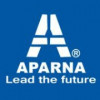Junior Engineer Civil
200+ Junior Engineer Civil Interview Questions and Answers

Asked in Tata Group

Q. What is your name Where are you from Ratio of M 20 grade concrete. How to find the weight of steel bar used in reinforcement ? How to measurements the concrete volume? Standard size of brick. What is volume of...
read moreThe interview questions cover various topics in civil engineering such as concrete, steel reinforcement, measurements, slabs, footings, and more.
M 20 grade concrete has a ratio of 1:1.5:3 (cement:sand:aggregate)
The weight of a steel bar used in reinforcement can be found using the formula: weight = (length x diameter^2 x density) / 162.27
The volume of concrete can be measured using the formula: volume = length x width x height
The standard size of a brick is 190mm x 90mm x 90m...read more

Asked in Larsen & Toubro Limited

Q. What was the spacing of the main bar and distribution bar?
The spacing of main bar and distribution bar depends on the design and load requirements of the structure.
The spacing is determined by the structural engineer during the design phase.
It varies depending on the size and shape of the structure, as well as the load it will bear.
The spacing should be such that the reinforcement is evenly distributed throughout the structure.
For example, in a slab, the spacing of main bars may be 150mm to 200mm apart, while the distribution bars m...read more
Junior Engineer Civil Interview Questions and Answers for Freshers

Asked in Nagarjuna Construction Company

Q. What is the water-cement ratio?
Water cement ratio is the ratio of the weight of water to the weight of cement used in a concrete mix.
It is an important factor in determining the strength and durability of concrete.
A lower water cement ratio results in stronger and more durable concrete.
The ideal water cement ratio varies depending on the type of concrete and its intended use.
For example, a water cement ratio of 0.45 is recommended for concrete used in bridges and other structures exposed to harsh weather c...read more

Asked in Zetwerk

Q. Do you understand the engineering drawings, Preparing of BBS,Quantity Estimation
Yes
Yes, I understand engineering drawings and can interpret them accurately.
Yes, I am proficient in preparing Bar Bending Schedules (BBS) for reinforcement detailing.
Yes, I have experience in quantity estimation for construction projects.
Yes, I am familiar with relevant software and tools used for these tasks.
Yes, I can provide examples of projects where I have successfully performed these tasks.

Asked in Runwal Group

Q. Types building materials, testing of materials,IS codes of rcc concrete earthquake
Building materials, testing, and codes for RCC concrete earthquake resistance.
Building materials include concrete, steel, wood, and masonry.
Testing of materials involves compressive strength, tensile strength, and durability tests.
IS codes for RCC concrete earthquake resistance include IS 456:2000, IS 13920:2016, and IS 1893:2016.
RCC (Reinforced Cement Concrete) is a composite material made of cement, sand, aggregates, and steel reinforcement.
Earthquake-resistant design of RC...read more

Asked in Dilip Buildcon

Q. What is the difference between a king post and a queen post?
King post and queen post are both types of trusses used in construction, with king post being a simpler design and queen post being a more complex design.
King post is a simple vertical member in a truss, while queen post is a pair of vertical members connected by a horizontal member.
Queen post trusses are stronger and can span longer distances compared to king post trusses.
King post trusses are commonly used in small structures like sheds, while queen post trusses are used in...read more
Junior Engineer Civil Jobs



Asked in Macma Infra

Q. What is the difference between PCC and RCC?
PCC stands for Plain Cement Concrete and RCC stands for Reinforced Cement Concrete.
PCC is a mixture of cement, sand, and coarse aggregates, used as a base for flooring, foundations, etc.
RCC is a combination of PCC and reinforcement bars, used in structural elements like beams, columns, slabs, etc.
PCC has a lower strength compared to RCC.
RCC provides better resistance against cracks and structural stability.
PCC is commonly used for non-structural elements, while RCC is used fo...read more
Asked in HAN Infra Solutions

Q. 3. What type of work executed ? Time required for completion of structure ? Manpower required for the sams ???
The type of work executed, time required for completion of structure, and manpower required for the same are dependent on the project.
The type of work executed can vary greatly depending on the project, but may include tasks such as site preparation, excavation, foundation work, framing, and finishing.
The time required for completion of a structure can also vary greatly depending on the size and complexity of the project, as well as factors such as weather and availability of...read more
Share interview questions and help millions of jobseekers 🌟


Asked in Nagarjuna Construction Company

Q. What is the pH value of rainwater?
PH value is not applicable to weather as it is a measure of acidity or alkalinity of a solution.
PH value is a measure of the concentration of hydrogen ions in a solution.
It is used to determine the acidity or alkalinity of a solution on a scale of 0 to 14.
Weather does not have a PH value as it is not a solution.
However, PH value can be affected by weather conditions such as acid rain.

Asked in Reliance Retail

Q. In the bolt connection shown in Figure 28, what is the block shear strength?
The block shear strength in the bolt connection shown in fig 28 is dlong.
Block shear strength refers to the maximum load a bolt connection can withstand before failure.
The term 'dlong' likely refers to a specific value or calculation related to the block shear strength.
To determine the block shear strength, factors such as the material properties, bolt size, and connection design must be considered.
Examples of factors affecting block shear strength include the tensile strengt...read more

Asked in Gannon Dunkerley & Co.

Q. What is the cutting size of plywood for making shuttering boards for a column size of 1 meter x 1 meter?
The cutting size of the plate for making shuttering board for a column size of 1m x 1m is not provided.
The cutting size of the plate depends on the thickness of the shuttering board.
The thickness of the shuttering board is determined based on the load and requirements of the column.
The cutting size can be calculated by subtracting the thickness of the shuttering board from the column size.
Without the specific thickness requirement, the cutting size cannot be determined.

Asked in Larsen & Toubro Limited

Q. What is the optimal mixing time for concrete?
Mixing time in concrete is the duration required to achieve a homogeneous mixture of all the ingredients.
Mixing time depends on the type of mixer used.
It also depends on the quantity of ingredients and their properties.
The ideal mixing time is usually specified by the manufacturer or as per the design requirements.
Over-mixing can lead to a decrease in the strength of concrete.
Under-mixing can result in the formation of voids and weak spots in the concrete.
Asked in KNR Tirumala Infra

Q. What is the procedure for repairing a pothole?
The procedure of repairing a pot hole involves cleaning the area, filling it with suitable material, and compacting it properly.
Clean the pot hole by removing any debris or loose material
Fill the pot hole with suitable material such as asphalt or concrete mix
Compact the filled material properly to ensure a strong and durable repair
Seal the edges of the pot hole to prevent water infiltration and further damage
Regular maintenance and monitoring of repaired pot holes is importan...read more
Asked in KNR Tirumala Infra

Q. What is the thickness of BT and BC layers?
The thickness of BT and BC laying varies depending on the specific project requirements and specifications.
The thickness of BT (Bituminous Concrete) typically ranges from 25mm to 40mm.
The thickness of BC (Brick Concrete) can vary from 75mm to 150mm depending on the load-bearing requirements.
The thickness of BT and BC laying is determined by factors such as traffic load, climate conditions, and project specifications.

Asked in Larsen & Toubro Limited

Q. Which IS code is used for RCC and concrete mix design?
IS code for RCC is IS 456:2000 and for mix design of concrete is IS 10262:2009.
IS 456:2000 provides guidelines for the design and construction of reinforced concrete structures.
IS 10262:2009 provides guidelines for the proportioning of concrete mixes based on the desired strength and workability.
Both codes are important for ensuring the quality and durability of concrete structures.

Asked in Runwal Group

Q. Initial and final setting time of cement, testing of cement, main steel ,distribution steel.
The question is about cement testing and steel distribution in civil engineering.
Initial and final setting time of cement are important parameters to determine the workability of cement.
Testing of cement involves various methods such as compressive strength test, fineness test, and soundness test.
Main steel refers to the steel bars used in the primary reinforcement of concrete structures.
Distribution steel refers to the steel bars used in the secondary reinforcement of concre...read more

Asked in Sheltera Consultants

Q. How to calculate material of M20 grade concrete? And ratio
To calculate material of M20 grade concrete, we need to know the ratio of cement, sand, and aggregate.
M20 grade concrete has a mix proportion of 1:1.5:3 of cement, sand, and aggregate respectively.
To calculate the quantity of each material, we need to know the volume of concrete required.
Assuming the volume of concrete required is 1 cubic meter, the quantity of cement required would be 0.28 cubic meters.
The quantity of sand required would be 0.42 cubic meters and the quantity...read more

Asked in Avinash Group

Q. Least count of auto level, What is brick layout, types of foundation, M_25 mix , types of cement,concrete test, cover block, honeycomb repairing, autocad,
Questions related to civil engineering including auto level, brick layout, foundation types, concrete mix, cement types, concrete test, cover block, honeycomb repairing, and autocad.
Least count of auto level is the smallest measurement that can be read by the instrument.
Brick layout refers to the pattern in which bricks are laid in a wall.
Types of foundation include shallow foundation, deep foundation, and pile foundation.
M_25 mix is a concrete mix with a compressive strength...read more

Asked in Nagarjuna Construction Company

Q. What is the unit weight of 1m³ of steel?
Unit weight of 1m³ steel?
The unit weight of steel varies depending on its type and grade
The density of mild steel is around 7850 kg/m³
The density of stainless steel is around 7480 kg/m³
The density of high carbon steel is around 7850 kg/m³
The density of low carbon steel is around 7700 kg/m³
Asked in Roads and Buildings Department

Q. What are the standard tests conducted on concrete samples to ensure quality?
Standard tests on concrete ensure its strength, durability, and overall quality for construction projects.
Compressive Strength Test: Measures the concrete's ability to withstand axial loads, typically using a cube or cylinder sample.
Slump Test: Assesses the workability and consistency of fresh concrete by measuring the slump of a cone.
Flexural Strength Test: Evaluates the tensile strength of concrete by applying a load until failure on a beam specimen.
Water Absorption Test: D...read more

Asked in Sheltera Consultants

Q. How to perform cement finesse test and final setting time and initial setting time
Cement finesse test measures the particle size of cement. Initial and final setting time tests measure the time taken for cement to set.
For cement finesse test, a sample of cement is sieved through a standard sieve and the residue is weighed.
The residue is then sieved through a finer sieve and the weight of the residue is again measured.
The difference between the two weights gives the fineness of cement.
For initial and final setting time tests, a sample of cement is mixed wit...read more

Asked in Rajhans (Desai-Jain) Group

Q. What processes are carried out for foundations in areas with high water levels?
In high water level areas, foundation work involves dewatering techniques to lower the water table and ensure stability.
Dewatering techniques such as wellpoint systems, deep wells, sumps, and pumping are used to lower the water table.
Waterproofing measures like using impermeable membranes or grouting can be applied to prevent water infiltration.
Proper drainage systems are installed to divert water away from the foundation.
Special foundation designs like pile foundations or ra...read more
Asked in Riseonic Buildcon

Q. What is the role of cement in construction?
Cement plays a crucial role in construction as it binds the materials together and provides strength and durability to structures.
Cement acts as a binding agent, holding together different materials like sand, gravel, and water to form concrete.
It provides strength and stability to structures, making them capable of withstanding various loads and forces.
Cement helps in preventing the corrosion of reinforcement steel by creating a protective layer around it.
It contributes to t...read more
Asked in Riseonic Buildcon

Q. Which type of cement is best for house construction?
There is no single 'best' cement for house construction as it depends on various factors.
The type of cement used depends on the specific requirements of the project.
Ordinary Portland Cement (OPC) is commonly used for general construction purposes.
Portland Pozzolana Cement (PPC) is suitable for areas with high moisture content.
Rapid Hardening Cement (RHC) is used when quick setting is required.
Low Heat Cement (LHC) is used in massive concrete structures to reduce heat generati...read more

Asked in Labdhi Lifestyle Limited

Q. How do you calculate the quantity of concrete needed for a structure?
Calculating concrete quantity for a structure
Determine the volume of the structure to be filled with concrete
Calculate the required concrete mix ratio
Multiply the volume by the mix ratio to get the total concrete quantity
Add an extra 5-10% to account for wastage and spillage
Consider the type of structure and its intended use when selecting the mix ratio

Asked in Sehgal Foundation

Q. What tests are used to check the quality of cement, sand, brick, and steel at a construction site?
Quality tests for cement, sand, bricks, and steel ensure construction materials meet standards for safety and durability.
Cement: Conduct a 'fineness test' using a sieve to check particle size.
Sand: Perform a 'silt content test' by mixing sand with water and observing the sediment.
Bricks: Check compressive strength by applying pressure until failure; standard bricks should withstand at least 3.5 MPa.
Steel: Use a 'tensile test' to measure yield strength and elongation; ensure i...read more

Asked in Aparna Constructions and Estates

Q. 1. Explain about type foundation. 2. What is FAR? 3. How to calculate the weight per meter of rectangular bar?
Answers to questions about type foundation, FAR, and weight per meter of rectangular bar.
1. Type foundation refers to the type of structure used to support a building or other construction.
2. FAR stands for Floor Area Ratio, which is the ratio of a building's total floor area to the size of the plot of land it is built on.
3. The weight per meter of a rectangular bar can be calculated by multiplying the cross-sectional area of the bar by its density and length.

Asked in Patel Engineering

Q. Structure road work building work preparation for test of cement sand aggregate
Preparation for testing cement, sand, and aggregate for road and building work structures.
Collect samples of cement, sand, and aggregate from the source.
Mix the samples in the correct proportion to form a test specimen.
Add water to the specimen and mix it thoroughly.
Fill the specimen in a cube or cylinder mold and compact it.
Leave the specimen to cure for a specific period.
Test the specimen for compressive strength, water absorption, and other properties.
Ensure the test resul...read more

Q. Did you manage the control site independently, or was there another person involved?
I managed the control site independently, ensuring all tasks were completed efficiently and effectively.
I was responsible for daily site inspections to ensure compliance with safety regulations.
I coordinated with subcontractors to schedule work and resolve any issues that arose.
For example, I implemented a new tracking system for materials that improved efficiency by 20%.
I maintained communication with the project manager to provide updates and address concerns.
Asked in DVP INFRA PROJECTS

Q. How to calculate volume of piles and steel detailing
To calculate volume of piles, use geometric formulas. For steel detailing, use CAD software and follow industry standards.
For piles, calculate volume using formulas such as V = πr²h or V = Bh where B is the base area and h is the height.
For steel detailing, use CAD software such as AutoCAD or Tekla Structures and follow industry standards such as AISC or BS EN.
Steel detailing involves creating detailed drawings and specifications for the fabrication and erection of steel stru...read more
Interview Experiences of Popular Companies






Calculate your in-hand salary
Confused about how your in-hand salary is calculated? Enter your annual salary (CTC) and get your in-hand salary


Reviews
Interviews
Salaries
Users










